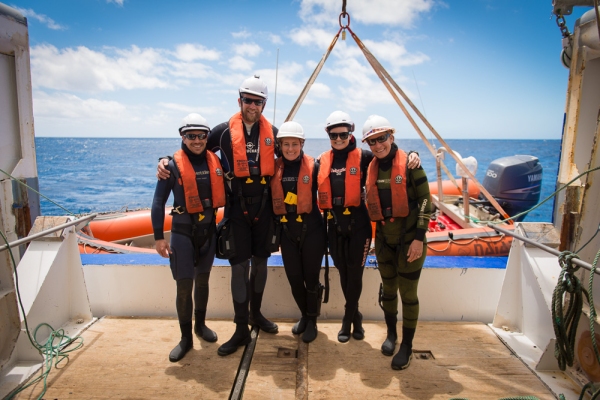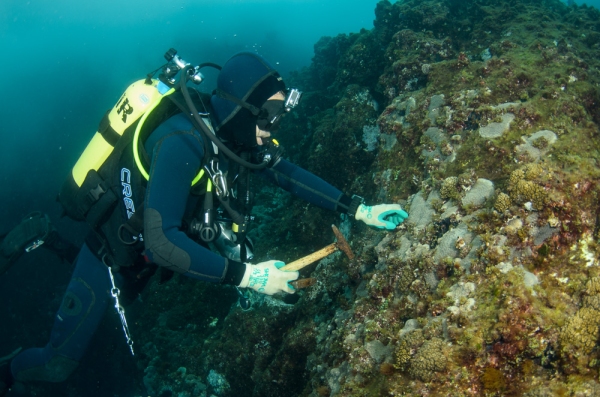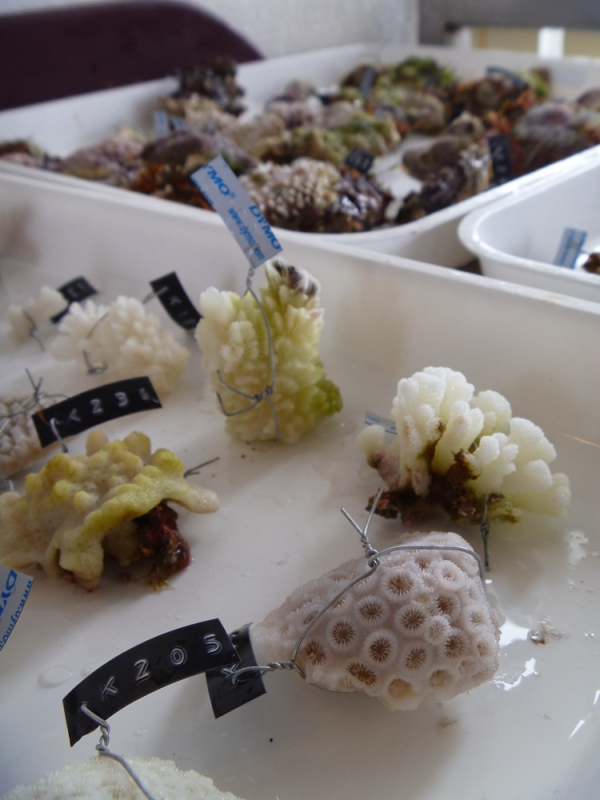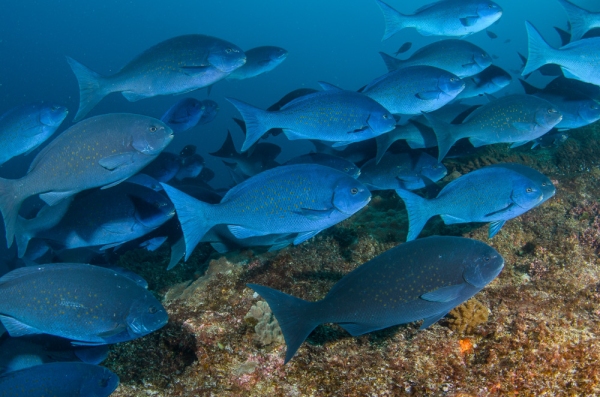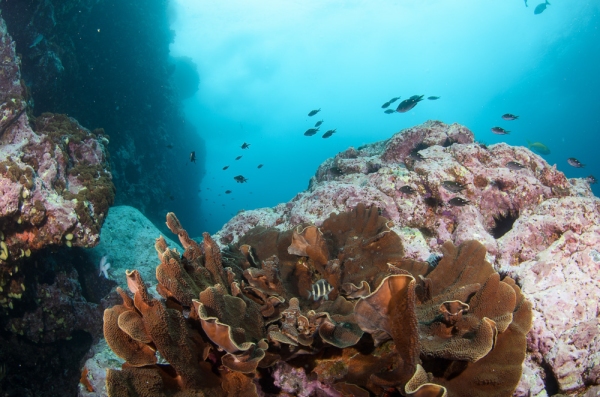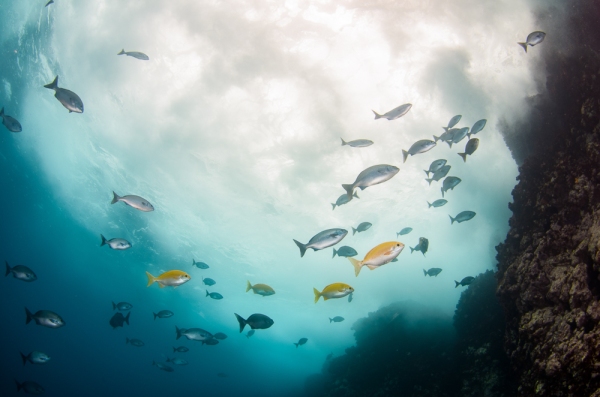29 October 2016
Over the last few days we, the “dive team”, including David Aguirre, Emma Betty and Libby Liggins from Massey University, Severine Hannam from the Auckland Museum, and Crispin Middleton from NIWA, have been recording corals, fishes, urchins and other invertebrates from the shallow waters (0-30m) surrounding Raoul Island to complement the biodiversity records from the deeper ocean collected by the other scientists onboard.
Dave and Crispin have photographed and collected several new coral records over the past few days. Many of these species would form vast coral reefs in warmer tropical seas, but in the subtropical waters of the Kermadec Archipelago, they typically form smaller colonies. These new records will help us understand the formation and maintenance of shallow water communities of the islands and to predict how they may change in future.
Severine, Emma, and Libby have been passing their expert eyes over the seaweed, fishes, and invertebrates that live in the shallow waters of Raoul Island and surrounding islets. Sometimes our dives cover a mere 10 square meters, yet they reveal several unknown and peculiar taxa, such as a hermit crab that seemingly farms anemones on its shell and shrimps that shelter amongst the forest of spines created by a dark red-brown coloured urchin species rarely seen on the New Zealand mainland.
The weather has enabled us to meet all of our science objectives at Raoul, complementing past knowledge and forging new research agendas for the region. Raoul has also provided a few unexpected gems such confirming previously uncertain records of elusive tropical fish species. We have had the fortune of being accompanied by turtles, giant black spotted groper, and the ever curious, but thankfully somewhat shy, Galapagos sharks. Humpback whales are omnipresent – we hear their song underwater, and sometimes even see them cruising past.
As the expedition heads south, the question is what will be found now? We leave the relatively well surveyed and familiar waters of Raoul to explore at Macauley Island and L’Esperance Rock. Team members have previously dived these southern islands only a few times – there is certainly much scope for the formation of new knowledge and discovery.
The expedition team congratulates Crispin for being announced as the New Zealand Geographic Wildlife photographer of the year! A massive achievement and reward for his dedication and talent. We feel slightly guilty for not using his photographic skills to their full extent, but there are always opportunities for his keen eye to find something to showcase. Crispin accepted his award in style on Thursday night from the satellite phone on the bridge of the Tangaroa.

